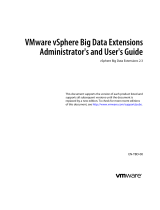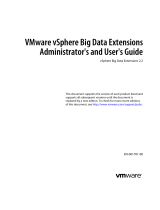
1 Getting started with the ME4 Series vSphere Client Plug-in.............................................................4
Software and hardware prerequisites.................................................................................................................................4
2 Install and register the plug-in.......................................................................................................5
Installation prerequisites....................................................................................................................................................... 5
Install the plug-in....................................................................................................................................................................6
Start and stop the system service...................................................................................................................................... 6
Upgrade the plug-in...............................................................................................................................................................7
Uninstall the plug-in............................................................................................................................................................... 7
Clean up after uninstalling the plug-in...........................................................................................................................7
Run commands in silent mode............................................................................................................................................. 8
Access the plug-in................................................................................................................................................................. 8
3 Use the plug-in to discover the storage system...............................................................................9
Discover the storage system............................................................................................................................................... 9
Change the storage system password............................................................................................................................... 9
Remove a storage system from inventory......................................................................................................................... 9
Configure role-based access control.................................................................................................................................10
View the assigned permissions.....................................................................................................................................10
4 Manage datastores...................................................................................................................... 11
Create a datastore................................................................................................................................................................11
Create a datastore on a new volume............................................................................................................................11
Create a datastore on an existing volume...................................................................................................................12
Viewing host-to-volume mappings.................................................................................................................................... 12
Manage snapshots............................................................................................................................................................... 12
Take a snapshot..............................................................................................................................................................12
Remove a snapshot........................................................................................................................................................13
Clone a datastore................................................................................................................................................................. 13
Mount a datastore..........................................................................................................................................................13
Unmount a datastore..................................................................................................................................................... 13
5 Common administrative tasks...................................................................................................... 15
View events and alerts........................................................................................................................................................ 15
View help...............................................................................................................................................................................15
Verify vCenter services are running.................................................................................................................................. 15
6 Troubleshooting......................................................................................................................... 16
Contents
Contents 3




















